Feeding our pets is a subject of much myth, confusion and contention. The answer however, is surprisingly simple.
The best quality diet you can feed your pet is RAW MEATY BONES AND HOME COOKING. There you have it – it’s that simple!
As far as RAW FEEDING goes, our clinic believes this is far healthier than commercial food however we will define what we mean by RAW:
Yes, completely raw probably has the highest nutrient value. However it does come with the slight concern of occasional bacterial gastro-enteritis that is often annoying, but also possibly (very rarely) life threatening needing days in hospital. Although this is rare, and we believe not really a reason to not consider the benefits of raw, one option is to slightly cook a made up home meal, similar to what we do our own meals. See below for more detail, but light cooking destroys harmful bacteria, but does not reduce the nutrient content much at all, keeping the food almost identical to complete raw for quality. Hence it’s an option to lightly cook a batch of food as cooked food is less likely to cause a bacterial concern.
Commercial food itself is not necessarily the healthiest way to feed our pets, it is the most convenient way to feed our pets. Of commercial food available, there is certainly a range of quality. We recommend that you do not use the very cheap supermarket brands. The more expensive super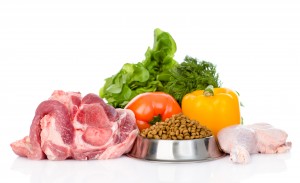 market brands are ok, especially if you are balancing it with plenty of quality home cooking. Some of the best veterinary commercial foods include the following:
market brands are ok, especially if you are balancing it with plenty of quality home cooking. Some of the best veterinary commercial foods include the following:
- Hills
- Royal Canin
- Eukanuba
- Advance
However we feel pet store brands such as Meals for Mutts, Ziwi Peak, Canidae, Blackhawk etc. are probably just as good (if not better in some cases). So you definitely don’t need to restrict yourself to veterinary brands. Prime 100 is a magnificent brand for both general feeding and for gastro-enteric and allergic skin patients.
Which of these should you feed? It doesn’t matter. The most important thing when choosing a commercial food for your pet is that he or she must like it, and it must agree with them. I.e. some individuals may be a little windy on one type of food so simply change it and try another.
Canned versus dry: Another myth! There is no difference in quality between canned food or dry food, just the quality of the actual brand. For example, there are some cheaper supermarket brands that when we open a can, we find it hard to stay in the same room it’s that smelly. This, to us, is an indication of a poor quality food. Open a can of Hills and there is no bad smell and the food itself is quite firm and looks good. This is an indication of a high quality food. So if you are using better quality foods, by all means give your pet a mix of dry and canned. They will love the choice and variety.
Pets, like us, should have variety in their diet for both physical and mental health!
Home cooking and table scraps, the good stuff!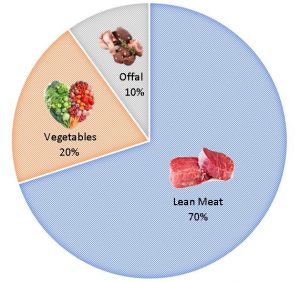
To have a balanced home cooked diet follow the following basic rules:
1) 20% vegetables (finely chopped or blended) and 70% lean meats of various sorts, 10% offal (heart, lungs, kidneys, liver etc)
2) Raw meaty bones 3-4 times weekly. Ideally lean lamb or pork ribs (minimum 3 ribs and never a single rib), or lamb necks, or kangaroo tails for dogs, and chicken wings or necks for cats. Before feeding raw bones, read this link carefully.
The above in itself is very good, however in addition to this, supplements such as a few sardines once or twice weekly, the odd egg, and vitamised (finely blended) green leafy vegetables such as spinach or silver beet are fantastic. This vegetable matter mimics the crushed herbaceous material found in the stomachs of herbivores that carnivores also often eat to get the nutrients form these food sources.
Whether you are using home cooking entirely or just adding the occasional correct table scraps to whatever commercial food you are using, keep some of the following suggestions in mind:
- If your pet is a little prone to weight gain, just like us humans, watch the carbohydrates and fats. The biggest mistake people make is giving their overweight pets rice, pasta, bread and potatoes. These carbs go straight to the waist line.
- If a little prone to being over weight, don’t give the above. Give fibrous type vegetables such as carrots, pumpkin, peas, broccoli etc.
- Lean meats of any sort are great. Do not feed spicy foods or rich foods, but lean meats.
- If you are using commercial foods, ideally use an appropriate life stage food such as puppy, light for overweight individuals, senior etc.
- If you are not using a quality commercial puppy food, make sure to add a calcium supplement for puppies, unless you are feeding quality bones 3-4 times weekly. Lamb ribs (never a single rib) and necks 3-4 times weekly is actually a better source of balanced calcium and phosphorous, so supplements are only needed for puppies on home cooked diets without bones. Our strong recommendation is to feed bones to puppies from 6 weeks of age.
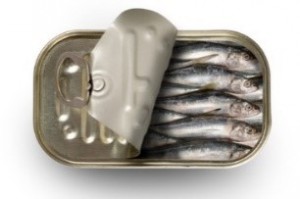 |
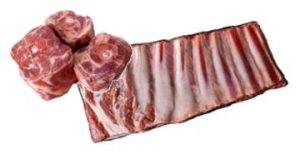 |
|
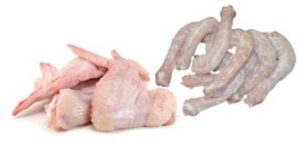 |
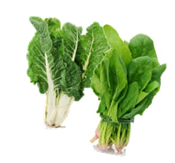 |
There are lots of myths about feeding supplements such as yeasts, seaweed, vitamins etc. All of these things are likely unnecessary in a good balanced diet, but also aren’t going to do any harm.
Processed food: We understand from basic science, that the more we process a food, the less valuable the nutrients are. We all know lightly simmered broccoli is far healthier than broccoli boiled until it’s pale and mushy. Commercial dry food is cooked to within an inch of it’s life! Hence although technically it may have the scientific correct balance of nutrients a pet may require, how healthy are those nutrients once processed to the enth degree? As such, it’s hard for us to believe such food is nearly as healthy as the natural ingredients we cook for our selves every day.
If you decide to make your pets own food, or indeed just give them lot’s of the right table scraps and left overs from dinner, our food is only slightly cooked compared to commercial food which means it retains most nutrients. Hence our belief that the right left overs are far healthier than all commercial food.
So the bottom line is – keep it simple and logical, and consider using a varied diet. We always feel a little sorry for a pet when someone tells us, “I just feed him dry food because that’s all he needs”.
We don’t quite believe what the commercial sales people tell us. Give your pet a varied diet with lots of natural raw meaty bones and table scraps. They’ll not only love you for it, but will live a longer, healthier life!
